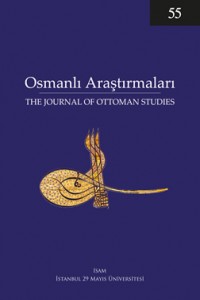Abstract
In recent decades, the concept of the frontier has become an important
theoretical framework through which one can readdress certain questions and
issues relating to the historical past. For example, many scholars in Mediterranean
Studies, particularly those starting from the Braudel viewpoint, no longer
conceptualize boundaries by conflict, but instead as spaces characterized by social,
cultural, religious and political exchanges. Following on from this, researchers have highlighted not only the importance
of the main actors that lived in the borderlands, but also the cultural interchange
that those actors shaped during their travels between two or more
civilizations. Trying to go beyond an Early Modern Mediterranean divided by
faith, Emilio Sola (Universidad Alcala de Henares-CEDCS) and Gennaro Varriale
(Università Federico II di Napoli-CEDCS), both directors of the CEDCS
(Centro Europeo para la Difusion de las Ciencias Sociales), presented in their
Detrás de las apariencias. Información y espionaje (siglos XVI-XVII) a perception of
a new Mediterranean world that was hidden under the old one and crushed under
the rhetorical themes of crusade and jihad.1 A key point for analysis was the
study of the Spanish intelligence system throughout the 16th and 17th centuries,
showing the extent to which the space between the Ottoman Empire and Spanish
Monarchy was interlinked by several different go-betweens.
References
- Gennaro Varriale, Emilio Sola (editor), Detrás de las apariencias: información y espionaje (siglos XVI-XVII), Alcalá de Henares: Universidad de Alcalá de Henares, 2015.
Abstract
In recent decades, the concept of the frontier has become an important
theoretical framework through which one can readdress certain questions and
issues relating to the historical past. For example, many scholars in Mediterranean
Studies, particularly those starting from the Braudel viewpoint, no longer
conceptualize boundaries by conflict, but instead as spaces characterized by social,
cultural, religious and political exchanges. Following on from this, researchers have highlighted not only the importance
of the main actors that lived in the borderlands, but also the cultural interchange
that those actors shaped during their travels between two or more
civilizations. Trying to go beyond an Early Modern Mediterranean divided by
faith, Emilio Sola (Universidad Alcala de Henares-CEDCS) and Gennaro Varriale
(Università Federico II di Napoli-CEDCS), both directors of the CEDCS
(Centro Europeo para la Difusion de las Ciencias Sociales), presented in their
Detrás de las apariencias. Información y espionaje (siglos XVI-XVII) a perception of
a new Mediterranean world that was hidden under the old one and crushed under
the rhetorical themes of crusade and jihad.1 A key point for analysis was the
study of the Spanish intelligence system throughout the 16th and 17th centuries,
showing the extent to which the space between the Ottoman Empire and Spanish
Monarchy was interlinked by several different go-betweens.
References
- Gennaro Varriale, Emilio Sola (editor), Detrás de las apariencias: información y espionaje (siglos XVI-XVII), Alcalá de Henares: Universidad de Alcalá de Henares, 2015.
Details
| Primary Language | English |
|---|---|
| Journal Section | Articles |
| Authors | |
| Publication Date | May 4, 2020 |
| Published in Issue | Year 2020 Volume: 55 Issue: 55 |


